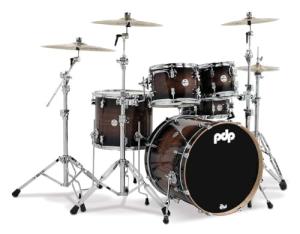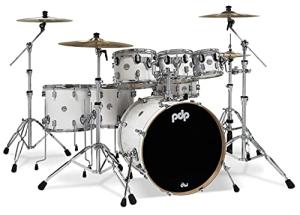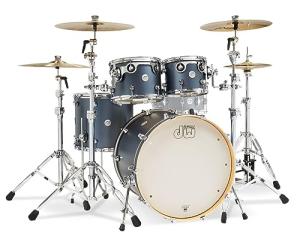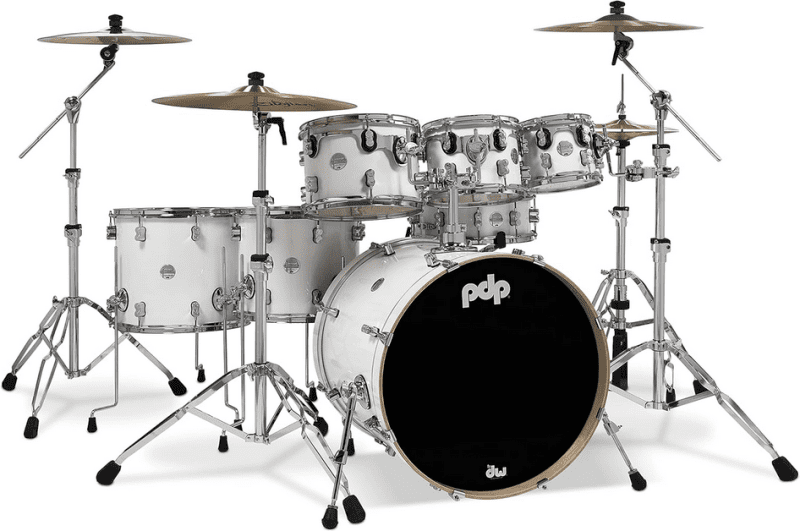Drumming is more than keeping time. It's a combo of technique, creativity, and expression. Key to this are drum fills and solos. As a drummer, learning to make these parts can boost your shows, hooking the audience with your drumming skills and percussion mastery.
This guide aims to help you, the budding drummer, learn crucial skills, drum rudiments, and drumming exercises for mastering drum fills and solos. We will start with the basics, move to groove patterns and linear drumming, and onto advanced drumming. By the end, you'll know how to bring your drumming creativity to the forefront.

Are you a novice or a drumming pro wanting to improve your soloing skills? This guide is here to help. You'll learn about one-beat, two-beat, and three-beat sixteenth-note fills. We'll also cover triplet-based fills, thirty-second note patterns, and odd note groupings. These are the secrets to make your drumming unforgettable.
Let's start this drumming journey together. You'll learn techniques, drumming exercises, and practice routines. Not only will your drum fills and solos get better, but you'll also stun the crowd with your next-level drumming skills.
Understanding Drum Fills and Solos
In drumming, drum fills and drum solos are key. They look great and make the music sound better. They help set the rhythm and show the drummer's skill.
What is a Drum Fill?
A drum fill is a short, rhythmic break in a song's beat. It transitions between song parts or adds excitement. A fill can be simple or complex, showing the drummer's style and talent.
Drum Fills vs. Drum Solos
Drum fills and solos have their differences. Drum solos are longer and let the drummer really show off. They highlight the drummer's rhythm and creativity.
Types of Drum Solos
There are many types of drum solos. Some drummers play with others in a "trading fours" style. Or they might do long, freeform solos. These solos mix skill and musical feeling, leaving a lasting impression.
| Drum Fills | Drum Solos |
|---|---|
| Short patterns that change the song's rhythm | Long, creative showcases of drum skill |
| Switch song parts or add excitement | Demonstrate the drummer's technical and creative skills |
| Can be simple or very complex | Mix technique with musical storytelling |
Knowing the difference between drum fills and drum solos helps drummers play better. It lets them use these techniques to make their drumming impressive and enjoyable for listeners.
Building Blocks of Drum Fills and Solos
To create stunning drum solos and fills, drummers need to start with the basics. This includes drum rudiments, sticking patterns, and knowing musical structure. These skills help drummers play with both great technique and creativity.
Rudiments and Sticking Patterns
Drum rudiments are crucial techniques. They form the basis for complex sticking patterns. Knowing rudiments like single stroke or paradiddle leads to a varied pattern of beats. Developing these basics opens a world of creative options for solos and fills.
Developing Hand-Foot Coordination
Good drummers sync their hands and feet well. This lets them play complex patterns smoothly. By practicing, drummers learn to control their limbs separately, aiming for well-coordinated performances.
Understanding Musical Structure
Great drummers understand music deeply. They grasp musical structure and can adapt to changes. Their knowledge of musical theory helps them make solos and fills that enrich the song.
| Foundational Elements | Key Attributes |
|---|---|
| Drum Rudiments | The fundamental patterns and techniques that serve as the building blocks for drumming |
| Sticking Patterns | The combinations and sequences of stick movements that create intricate rhythmic figures |
| Hand-Foot Coordination | The ability to smoothly integrate the hands and feet to execute complex polyrhythms and rhythmic patterns |
| Musical Structure | The understanding of melody, harmony, and rhythm that allows drummers to craft fills and solos that complement the overall composition |

Mastering Sixteenth-Note Drum Fills
Sixteenth-note drum fills are a key part of captivating drum performances. They are rapid, complex patterns that show a drummer's skill. These fills bring depth and excitement to music. We will explore and learn to master various sixteenth-note drum fills.
One-Beat Sixteenth-Note Fills
One-beat fills are short yet powerful drum patterns. They create quick bursts of energy in music. They are great for connecting different parts of a song or making drum solos more interesting. Learning to play these fills well is important for improving drumming skills.
Two-Beat Sixteenth-Note Fills
Two-beat fills offer more space for creativity than one-beat fills. They are longer and allow for more complex rhythms. By mastering these fills, you can improve drum coordination and use more advanced techniques. This makes your drumming performances more dynamic and engaging.
Three-Beat Sixteenth-Note Fills
Three-beat fills up the challenge level even more. They are longer than the previous types, requiring top rhythm and drum control. Learning these fills helps you smoothly change between different parts of a song. They also add excitement to your drum playing.
Full Measure Sixteenth-Note Fills
Full measure fills are the most challenging but rewarding. They cover an entire four-beat measure. Playing these fills well requires superb control and consistency. mastering them lets you impress your audience with amazing drum solos.

"How to Master Drum Fills and Solos"
As drummers, mastering drum fills and drum solos are key. They let us show off our drumming techniques, drumming skills, and drumming creativity. In this guide, we've covered the basics and advanced tips to master drum fills and solos.
We've looked into the differences between drum fills and drum solos. We also talked about the need for drum independence and drum coordination. This article has given you the skills to make your drumming stand out.
The road to mastering drum fills and drum solos is about learning and hard work. Enjoy the process and the challenges. With practice and new experiences, your drumming will get better and better.
So, use this guide as your map and motivation for improving as a drummer. Start your journey to drumming mastery. Let your drum fills and drum solos thrill and motivate listeners.
Advanced Drum Fills and Solos
Drummers always try to go beyond what they already know. In this part, we look at advanced drum fills and solos. We will explore how to move past the basics and reach true drumming mastery.
Triplet-Based Drum Fills
Triplet-based fills can make your drumming more exciting. They add a special kind of energy. Learning to play these fills smoothly shows you have advanced drumming techniques.
Thirty-Second Note Drum Fills
Thirty-second note fills are for showing off your technical skills. They are very fast and need great coordination. Mastering these fills brings a lot of drumming creativity to your play.
Odd Note Groupings
Odd note groupings break away from usual drum patterns. Using groups like five or seven notes makes your beats more interesting. Learning to play these patterns well is a sign of drumming mastery.
Two-Bar Drum Fills
Two-bar fills are longer and let drummers show their skills better. They involve more complex musical structure and transitions. Creating great two-bar fills shows you're always working on your craft.
Conclusion
As you walk through the exciting world of drums, remember: becoming a master takes time. It's about always learning more about rhythm, technique, and being creative. The things you've learned so far are just the beginning. They'll help you make your own drumming style.
To become great at drumming, you need to practice a lot. Spend time improving your drum fills and solos. Try new techniques and skills too. Be creative by trying different rhythms and working on playing with both hands and feet. Also, challenge yourself to read and play music in new ways.
Enjoy every step of your drumming journey. Celebrate your improvements and face the hard parts with a smile. Stay eager to learn. This way, you'll truly understand the art of drumming. You'll amaze people and inspire other musicians along the way.






